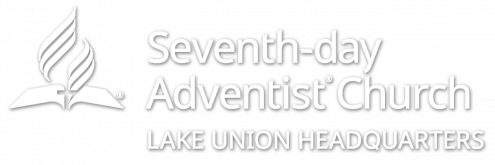Health and Safety
Lake Union Conference Model Guidelines for the Re-Opening of
Worship and Assembly Practices During Covid-19 Outbreak
(Guidance for June to August, 2020)
As our churches plan to begin to fellowship again after our period of coronavirus lockdown, it is important to our gospel witness that we safeguard the health of our members and communities, rather than posing threats to them. Even in those states where worship services are exempt from lockdown laws, the civil standard of care for gatherings of all kinds, including churches, will be shaped by these local, state and federal standards.
It may expose the church and the conference to elevated levels of legal risk if churches are opened more rapidly or liberally than recommended by these sources. You need to consider, in consultation with your Conference leadership, when and how it is appropriate to return to church. Once you do decide to have in-person services again, we advise that you consider the following guidelines:
- Ask your members to continue to worship on-line from home if they: have active cold or flu symptoms; have reason to believe they have recently been exposed to people infected with the virus; or are senior citizens and/or have underlying chronic medical conditions like heart disease or diabetes.
- Be prepared to regularly clean the church building, including disinfecting pews, rostrum furniture, AV equipment, microphones, as well as door handles, restrooms, and drinking fountains (consider shutting down fountains and providing bottled water, or asking people to bring their own.) Replace filters on air conditioning units to keep the air clean.
- Consider having two services, with an interval between to limit the number at one service and to allow for cleaning between services. Have attendees sit every other pew, with six feet between family groups. Remove hymnals and Bibles from the pews, and use AV displays to put up hymns and songs, as well as announcement information. Prop open, if possible, doors and windows to promoted air circulation, and prevent touching of handles.
- Ask church attendees not to give hugs and handshakes, and to maintain a safe social distance from others (generally six feet or more); encourage the wearing of masks, and suspend communion services for the coming summer, or create ways of doing communion that do not involve touch beyond family groups.
- Provide anti-septic hand cleanser (with 60% alcohol content, if available) at all church entrances, with signs indicating a no-handshake zone and encouraging frequent hand washing; have greeters place bulletins on tables or trays for people to pick up, or better yet, dispense with bulletins and rely on video announcements in the church.
- If you choose to have Sabbath school, have children under the age of ten attend Sabbath school with a parent, and direct older children to honor social distancing; organize the children’s story time to avoid contact among the children, perhaps listening from the pews, and find alternate ways to take up the children’s or “lambs’ offering.”
- Do not pass offering plates; place plates in the back, or the front, to be used as people leave; encourage members to give on-line. If possible, request members to enter and exit by different doors, to avoid congestion in one entrance. Consider dismissing people by the use of ushers, so as to maintain social distancing.
- Music is an important part of worship, yet can also present a risk of spreading germs. Initially, it would be wise to forego song service. When you do begin, avoid operating choirs over the summer, have praise team members stand a good distance apart; clean the piano and organ after each use.
- Do not begin potlucks and community meals, at least over the summer, as the situation is assessed.
- Plan health nuggets in Sabbath School and church reminding people of immune-system boosting behaviors, such as getting regular exercise, sunshine, good sleep, and avoiding excess sugars. The Adventist health message provides an anti-Coronavirus behavior template, let’s share it that way!
Share your protocol with the members, and especially all church leaders, including elders, deacons, and Sabbath School teachers, so everyone can be on the same page.
In creating your own opening procedures, your church leadership should be familiar with and take seriously the assembly laws, guidelines, and recommendation of your state and local governments, as well as those of the CDC of the federal government.
If we turn our churches into sites of health awareness and support, rather than sources of concern, they can be seen as centers of community solutions and health promotion, both physical and spiritual. “Beloved, I pray that all may go well with you and that you may be in good health, as it goes well with your soul.” 1 John 1:3
